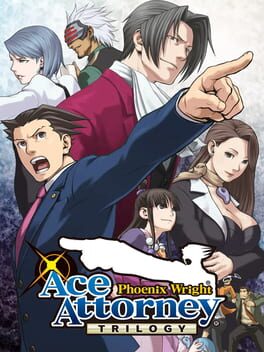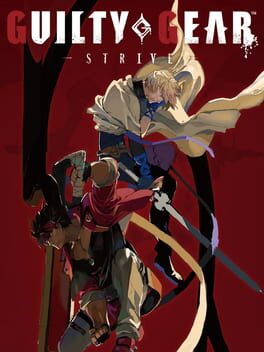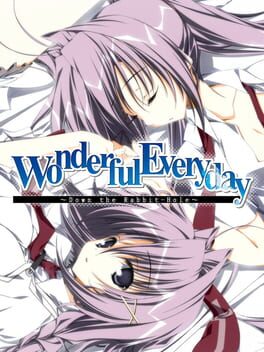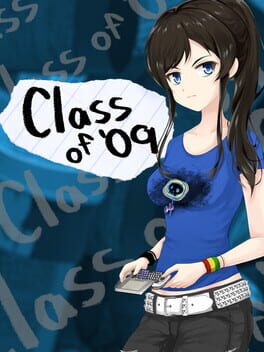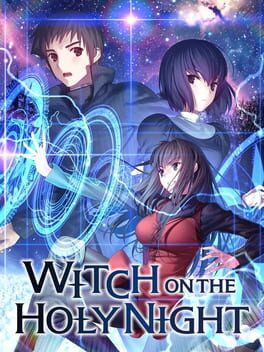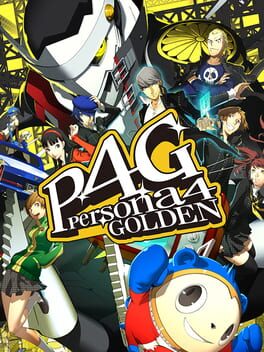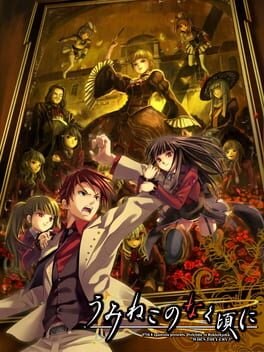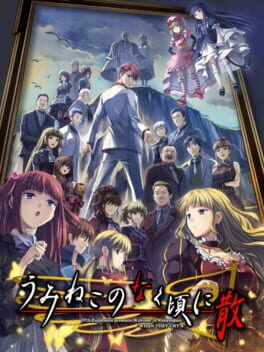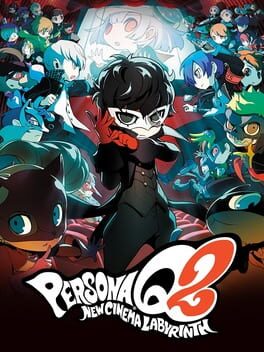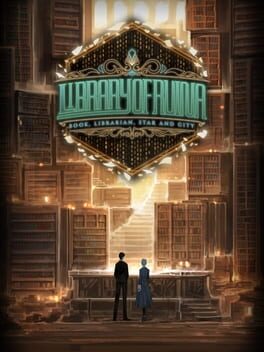sanaeclair
14 Reviews liked by sanaeclair
Guilty Gear: Strive
2021
This game was busted and sucked at the beginning where I just didn’t touched the game again till recently.
I can firmly say the game is pretty peachy now after some needed mechanic additions, move sets, and other balancing.
It’s a neutral heavy game and can straight up get got in two combos easily, like Samurai Shodown level of cut throat it can be. For beginning players, just get adjusted to the game’s core mechanics and STRONGLY recommend the mission game mode. Arc System for the most part been so informative in their tutorials where it’s just as good here if not their best.
The tower system is very cool and makes for less frustration for online sessions in comparison to other fighting games out there rn like the traditional rank ladder climbs. Kinda stinks when you’re in the groove and wanting to match up with a player again, but can’t because they or you went up a floor…
Primarily not getting the 9 or 10/10 as the narrative is just “aight” and single player content just isn’t there compared to BBCF, +R, etc.
I can firmly say the game is pretty peachy now after some needed mechanic additions, move sets, and other balancing.
It’s a neutral heavy game and can straight up get got in two combos easily, like Samurai Shodown level of cut throat it can be. For beginning players, just get adjusted to the game’s core mechanics and STRONGLY recommend the mission game mode. Arc System for the most part been so informative in their tutorials where it’s just as good here if not their best.
The tower system is very cool and makes for less frustration for online sessions in comparison to other fighting games out there rn like the traditional rank ladder climbs. Kinda stinks when you’re in the groove and wanting to match up with a player again, but can’t because they or you went up a floor…
Primarily not getting the 9 or 10/10 as the narrative is just “aight” and single player content just isn’t there compared to BBCF, +R, etc.
Tales of Berseria
2016
One of the most enjoyable JRPG casts. Story isn't very deep but its well executed for a revenge story than current modern counter-parts.
Combat does get repetitive after a while but that can also be blamed on me by only playing Velvet and not giving anyone else a try.
I went in small expectations but came out pleasantly surprised, one of my favourite JRPGs, or at least top 10.
Combat does get repetitive after a while but that can also be blamed on me by only playing Velvet and not giving anyone else a try.
I went in small expectations but came out pleasantly surprised, one of my favourite JRPGs, or at least top 10.
Class of '09
2021
Final Fantasy XVI
2023
Persona 4 Golden
2020
Still one of my favorite games ever and if anything Golden new content enhanced that feeling. Really enjoyable dungeon crawling, lovable cast of characters, the theming of bonding really well explored and even make some of the things I dislike in the original better. And of course, killer OST. The new dungeon isn't as good but at least I liked the plot and SLink. And the other SLink is great. This game is amazing, was such a great memory of my teenage years and Golden made it even better.
Lobotomy Corporation
2018
Massive fan of Monster Manual type stuff. Pretty much my introduction to real management type games but this is pretty good. Eventually gets incredibly involved but it's fun nonetheless. While difficulty is definitely part of the intended experience, resetting to start a particularly grueling day over for the 10th time gets very grating; just about my only real complaint. Otherwise incredible entry point to Project Moon games.
Umineko is unlike anything else you will ever read. It is hard to recommend due to its length, often poor pacing, and number of content warnings (read: it contains every cw known to mankind), and yet it is my favourite VN of all time.
My advice for anybody on the fence about reading Umineko:
1) Read Umineko
2) Go into Umineko as unspoiled as physically possible
3) Engage with the mysteries it presents you and you will be rewarded far more than reading it passively
4) Without love, it cannot be seen
My advice for anybody on the fence about reading Umineko:
1) Read Umineko
2) Go into Umineko as unspoiled as physically possible
3) Engage with the mysteries it presents you and you will be rewarded far more than reading it passively
4) Without love, it cannot be seen
Gameplay:
Persona Q2: New Cinema Labyrinth’s gameplay is primarily dungeon-crawling. The player will traverse through various dungeons, slowly mapping out their progress by hand as they proceed. During these crawls, the player’s party can be attacked by enemies via random encounters, and that is basically all there is to Persona Q2. Of course, both of these two components have a fair amount of depth. Dungeon maps are drawn by hand, with only floor tiles being filled out automatically. This means that the player will need to pay attention to their surroundings, which is important since each floor contains a powerful item which can only be accessed once that floor’s map is filled out. While this system of manually drawing the map can be fun, I feel that more often than not I was simply looking at the map instead of my surroundings, which I think is generally a sign of poor game design. But the dungeon floors themselves tended to look somewhat samey. While each dungeon was distinct in of itself, only one of them presented any major design changes to its floors part way through. I found the dungeon crawling to be decently fun early into the game, but by the end it got to be a slog. I think this issue could have been avoided if the game was a lot shorter, or if the dungeons had contained more involved puzzles to contend with. They all have some kind of gimmick, but the only one I found particularly interesting was the fourth dungeon’s mechanic, which involves the raising and lowering of pillars to make or block a path.
The combat of Persona Q2 is actually very fun, at least in a vacuum. Each character only has one main Persona, which learns a set of skills as the character levels up. However, every character can also equip a sub-persona, which can be won from some battles and fused together to create new sub-personas with different combinations of skills. This allows for a party in which every character plays a distinct role, but also can be customized as much as the player wants, which is great since the player can already pick from every playable character in Persona 3 Portable, Persona 4, and Persona 5 (not Royal, however). I would go so far as to say that this system is superior to what the main Persona games currently have; I would love to see something like this in Persona 6. All-out attacks return from the main series as well, occurring when the party has knocked down all of the enemies (which can be done with a critical hit or by hitting the enemy with an attack it is weak to). And the last main mechanic to mention is boost. This happens to a character when they land a critical hit or attack an enemy’s weakness, allowing them to use a skill on their next turn at no cost. However, they will lose the boost if they take damage before their next attack. Boost is fun to use, but I cannot say that I felt like it added too much to the gameplay. There was never a situation when I felt like I had to use boost in order to win. Overall the core combat is quite fun, but it is brought down quite a bit by other factors. For one, the random encounter rate is annoyingly high. It seemed like I was always being interrupted in my dungeon crawling, making battle more of a distraction than anything else. Additionally, the game requires a lot of grinding in order for the party to stand a chance against the dungeon bosses. This can be alleviated for the most part by the use of a DLC item that grants 3 times the EXP to all party members in battle, but that item also breaks a lot of the game’s balancing in other areas (such as persona fusion). Overall, the gameplay of Persona Q2 is fun many times, but some frustrating design choices waste a lot of the player’s time, unfortunately.
Story:
To be honest, I feel like the story of this game missed most of its potential. The only character from the main series who actually gets any large amount of development is the female protagonist from Persona 3 Portable. She is a fun character who does have some pretty interesting ideas explored, but her story is spread pretty far apart by the dungeon crawling. The only other character with any significant development is Hikari, who is an original character. I enjoyed her arc, which focuses on how she feels trapped when she tries to be herself, but it was hardly anything profound. The other problem I have with it is that she barely gets any focus until the fourth dungeon. In fact, it feels like hardly anything of note happens prior to that dungeon; the party is mostly just focused on escaping, with a few character interactions being mixed in. However, even those felt like missed opportunities. Most of the inter-game character interactions are saved for the side quests, but because of the annoying nature of dungeon crawling in this game, I didn’t want to do any of them. The story and character interactions had a lot of cool directions to potentially go in, but overall this story mostly missed the mark for me.
Visuals and Music:
Visually, I actually liked this game more than I expected. The chibi characters look much better than I’d anticipated, and the environments look good too, though they get a bit repetitive after exploring them for hours on end. The music here is also fantastic, with some of the best battle themes in the entire Persona series. Even if you have no interest in this game, I’d recommend checking some of them out.
Conclusion:
This game feels like it was really close to being something great, only to fall apart a bit in a few key areas. The music, visuals, and combat are all great, and work fine as is. I think that if the story had been consolidated, then expanded a little bit, and the dungeon crawling had been greatly reworked to be less time-wasting, this game could have been more like twenty-five or thirty hours, and much better for it. As of now, it is a fifty hour game that has a lot of good and a bit of bad in it. I feel pretty conflicted on it overall, and I would not recommend it unless you think the dungeon crawling sounds up your alley.
Score: 60/100
Persona Q2: New Cinema Labyrinth’s gameplay is primarily dungeon-crawling. The player will traverse through various dungeons, slowly mapping out their progress by hand as they proceed. During these crawls, the player’s party can be attacked by enemies via random encounters, and that is basically all there is to Persona Q2. Of course, both of these two components have a fair amount of depth. Dungeon maps are drawn by hand, with only floor tiles being filled out automatically. This means that the player will need to pay attention to their surroundings, which is important since each floor contains a powerful item which can only be accessed once that floor’s map is filled out. While this system of manually drawing the map can be fun, I feel that more often than not I was simply looking at the map instead of my surroundings, which I think is generally a sign of poor game design. But the dungeon floors themselves tended to look somewhat samey. While each dungeon was distinct in of itself, only one of them presented any major design changes to its floors part way through. I found the dungeon crawling to be decently fun early into the game, but by the end it got to be a slog. I think this issue could have been avoided if the game was a lot shorter, or if the dungeons had contained more involved puzzles to contend with. They all have some kind of gimmick, but the only one I found particularly interesting was the fourth dungeon’s mechanic, which involves the raising and lowering of pillars to make or block a path.
The combat of Persona Q2 is actually very fun, at least in a vacuum. Each character only has one main Persona, which learns a set of skills as the character levels up. However, every character can also equip a sub-persona, which can be won from some battles and fused together to create new sub-personas with different combinations of skills. This allows for a party in which every character plays a distinct role, but also can be customized as much as the player wants, which is great since the player can already pick from every playable character in Persona 3 Portable, Persona 4, and Persona 5 (not Royal, however). I would go so far as to say that this system is superior to what the main Persona games currently have; I would love to see something like this in Persona 6. All-out attacks return from the main series as well, occurring when the party has knocked down all of the enemies (which can be done with a critical hit or by hitting the enemy with an attack it is weak to). And the last main mechanic to mention is boost. This happens to a character when they land a critical hit or attack an enemy’s weakness, allowing them to use a skill on their next turn at no cost. However, they will lose the boost if they take damage before their next attack. Boost is fun to use, but I cannot say that I felt like it added too much to the gameplay. There was never a situation when I felt like I had to use boost in order to win. Overall the core combat is quite fun, but it is brought down quite a bit by other factors. For one, the random encounter rate is annoyingly high. It seemed like I was always being interrupted in my dungeon crawling, making battle more of a distraction than anything else. Additionally, the game requires a lot of grinding in order for the party to stand a chance against the dungeon bosses. This can be alleviated for the most part by the use of a DLC item that grants 3 times the EXP to all party members in battle, but that item also breaks a lot of the game’s balancing in other areas (such as persona fusion). Overall, the gameplay of Persona Q2 is fun many times, but some frustrating design choices waste a lot of the player’s time, unfortunately.
Story:
To be honest, I feel like the story of this game missed most of its potential. The only character from the main series who actually gets any large amount of development is the female protagonist from Persona 3 Portable. She is a fun character who does have some pretty interesting ideas explored, but her story is spread pretty far apart by the dungeon crawling. The only other character with any significant development is Hikari, who is an original character. I enjoyed her arc, which focuses on how she feels trapped when she tries to be herself, but it was hardly anything profound. The other problem I have with it is that she barely gets any focus until the fourth dungeon. In fact, it feels like hardly anything of note happens prior to that dungeon; the party is mostly just focused on escaping, with a few character interactions being mixed in. However, even those felt like missed opportunities. Most of the inter-game character interactions are saved for the side quests, but because of the annoying nature of dungeon crawling in this game, I didn’t want to do any of them. The story and character interactions had a lot of cool directions to potentially go in, but overall this story mostly missed the mark for me.
Visuals and Music:
Visually, I actually liked this game more than I expected. The chibi characters look much better than I’d anticipated, and the environments look good too, though they get a bit repetitive after exploring them for hours on end. The music here is also fantastic, with some of the best battle themes in the entire Persona series. Even if you have no interest in this game, I’d recommend checking some of them out.
Conclusion:
This game feels like it was really close to being something great, only to fall apart a bit in a few key areas. The music, visuals, and combat are all great, and work fine as is. I think that if the story had been consolidated, then expanded a little bit, and the dungeon crawling had been greatly reworked to be less time-wasting, this game could have been more like twenty-five or thirty hours, and much better for it. As of now, it is a fifty hour game that has a lot of good and a bit of bad in it. I feel pretty conflicted on it overall, and I would not recommend it unless you think the dungeon crawling sounds up your alley.
Score: 60/100
